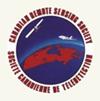Analysis of consistency in first-year sea ice classification potential of C-band SAR polarimetric parameters
IF 2
4区 地球科学
Q3 REMOTE SENSING
引用次数: 16
Abstract
The consistency in first-year sea ice classification potential of C-band SAR polarimetric parameters was analyzed by comparing the results of two studies conducted for the same ice types under different geophysical settings. The SAR images used in the comparison were acquired at an incidence angle difference of 4°. Probability density functions, grey level parameter images, and classification statistics derived using k-means classifier were used in the comparative analysis. The investigation showed that not all polarimetric parameters exhibit consistency in their classification performance under different geophysical settings. Out of the 20 polarimetric parameters analyzed, 12 demonstrated high levels of classification consistency between the two studies. Among these 12 parameters, only four possessed high classification accuracy and could be applicable for sea ice classification under variable environmental conditions. The parameters that showed the highest classification accuracies in both the studies were found to be inconsistent in their ice type separation capabilities. The signatures of these parameters differed for one or more ice types when compared between the two studies. The utility of these parameters in individual sea ice classification studies is recommended but their relevance in generalized sea ice classification scheme is unclear.c波段SAR极化参数第一年海冰分类潜力一致性分析
通过对比在不同地球物理条件下对相同海冰类型进行的两项研究结果,分析了c波段SAR极化参数第一年海冰分类潜力的一致性。用于比较的SAR图像在入射角差为4°时获得。采用概率密度函数、灰度参数图像和k-means分类器得出的分类统计进行对比分析。研究表明,在不同的地球物理条件下,并非所有偏振参数的分类性能都一致。在分析的20个极化参数中,有12个在两项研究之间表现出高度的分类一致性。在这12个参数中,只有4个具有较高的分类精度,能够适用于变环境条件下的海冰分类。两项研究中显示最高分类精度的参数在冰型分离能力上不一致。在两项研究之间进行比较时,这些参数的特征在一种或多种冰类型中有所不同。建议在个别海冰分类研究中使用这些参数,但它们在广义海冰分类方案中的相关性尚不清楚。
本文章由计算机程序翻译,如有差异,请以英文原文为准。
求助全文
约1分钟内获得全文
求助全文
来源期刊

Canadian Journal of Remote Sensing
REMOTE SENSING-
自引率
3.80%
发文量
40
期刊介绍:
Canadian Journal of Remote Sensing / Journal canadien de télédétection is a publication of the Canadian Aeronautics and Space Institute (CASI) and the official journal of the Canadian Remote Sensing Society (CRSS-SCT).
Canadian Journal of Remote Sensing provides a forum for the publication of scientific research and review articles. The journal publishes topics including sensor and algorithm development, image processing techniques and advances focused on a wide range of remote sensing applications including, but not restricted to; forestry and agriculture, ecology, hydrology and water resources, oceans and ice, geology, urban, atmosphere, and environmental science. Articles can cover local to global scales and can be directly relevant to the Canadian, or equally important, the international community. The international editorial board provides expertise in a wide range of remote sensing theory and applications.
 求助内容:
求助内容: 应助结果提醒方式:
应助结果提醒方式:


